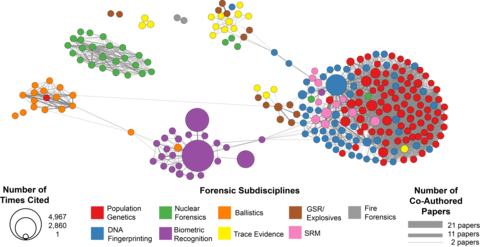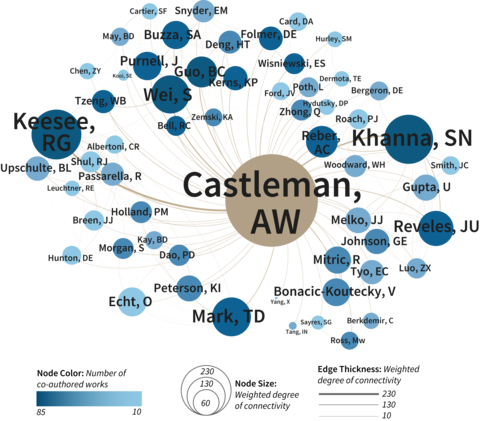Summary
The NIST Research Library documents the impact of NIST’s scientific research with a comprehensive suite of measurement tools and analyses. These include: calculations of metrics such as the h-index or publications in top tier journals, network analysis, and measurement of impacts beyond citations for products beyond papers.
Description
In response to h-index requests from NIST management and staff, Library staff provide comprehensive publication analysis studies and reports that ensure the h-index is put in proper context as one of several ways to assess the impact of an individual or group. The Library can also compile non-traditional measurements (altmetrics) of a researcher’s influence.
Top-tier journal analyses show the extent to which NIST publishes in the most highly cited journals in various disciplines. This is performed on an annual basis, along with a citation study that looks at NIST publication collaborations with external authors.
Impact can also be demonstrated with network visualizations. Library staff have used a variety of visualization programs—including Sci2, Gephi, CiteSpace, and several R packages*—to show how NIST-authored papers are connected to each other and to other work in various scientific disciplines. These visualizations, shown below, supplement more traditional charts and global citation maps.


The Library has also measured impacts of NIST’s patents and Standard Reference Databases (SRDs) using traditional measures such as citation counts along with mentions in the non-technical literature and on social media. Future work will integrate conventional metrics with more innovative approaches to the types of impact we measure and the way that these impacts are visualized.
*Identification of commercial products does not imply recommendation or endorsement by the National Institute of Standards and Technology.
Major Accomplishments
- 2016: Launched pilot study of alternative metrics
- 2015: Collaborated with NIST researcher in analyzing the impact of NIST’s most highly cited journal article
- 2015: Assessed the impact of NIST Standard Reference Databases (SRDs) to help evaluate NIST’s SRD program
- 2014: Presented citation network visualizations analyzing NIST forensics publications at Forensics @ NIST 2014 conference
- 2012: Began conducting NIST publication collaborations and top-tier journal studies in support of NIST’s annual Tech Transfer report to the Department of Commerce
- 2010: Conducted first major comprehensive citation analysis study requested by a NIST division

